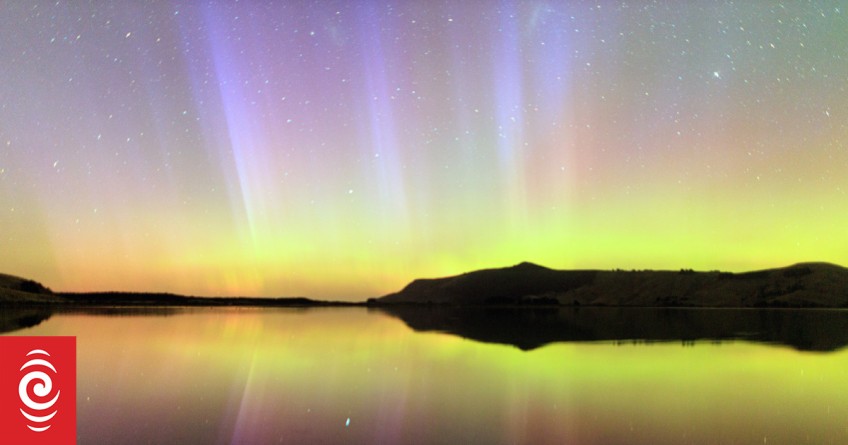
Earth-bound solar wind may add more dazzle to aurora displays
A huge sunspot has unleashed a blast of solar wind racing toward Earth at nearly three-million kilometres an hour.
It's expected to hit the atmosphere tonight, sparking more spectacular aurora.
Scientists are carefully monitoring the winds which can affect the Earth's magnetic field, satellites, and radio networks.
Otago University space physicist Jonathan Squire said if there were really big blasts, it could cause big problems on Earth.
"It can disrupt power grids, it can disrupt radio communications but this one's not big enough so we don't really have to worry."
Over the next two nights aurora might be visible, similar to earlier this week, with those at the bottom of the South Island best placed for a good view.
Squire agreed the sunspot was a sign of current instability in space weather. He explained the sun is a giant ball of charged gas called plasma with a sharp edge. It continues all the way out into space with an atmosphere called the corona which is much less dense than the main sun but is very hot and flies off into space.
"So the sun is actually literally evaporating constantly - it's losing a million tonnes of mass every second flying off into space and this is called the solar wind."
At present there is a patch of the corona which is a bit less dense and a bit cooler than the other material - referred to as a corona hole.
"These corona holes fire stuff off a bit faster than everything else - shooting it off a bit like a gun towards Earth."
Over the next few years Squire said the sun would be in a solar maximum phase so more sun spots and explosions could be expected before 11 years later it would enter its solar minimum phase.
"So we're coming up towards solar maximum at the moment which means there'll be lots of stuff happening so we can expect lots of good auroras and hopefully not any damaging events."
Asked if the current phase could inspire some sort of apocalyptic movie script, Squire said he did not know. However, the most famous event of this type was the Carrington event which occurred in 1859.
"If one of these events hit now it would really cause chaos. It would probably destroy lots of power grids around the world and it might be months before we get them back up.
"But these are definitely pretty rare - one every 100 or 200 years."
Main image (Supplied/Ian Griffin): Aurora Australis (the Southern Lights) appearing over New Zealand's skies on 27 February, 2023.

























